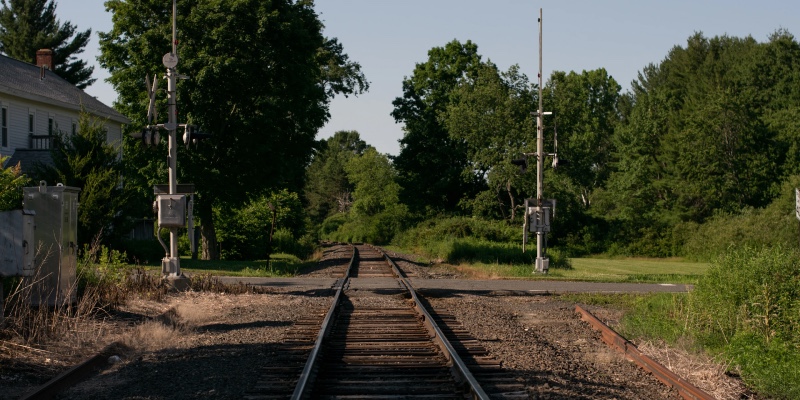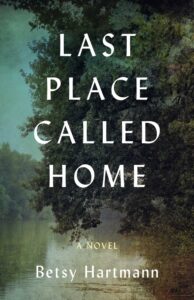The first bubble burst almost twenty years ago. Our house in a bucolic college town in western Massachusetts was vandalized and robbed while we were away on a family holiday. It wasn’t your classic teenage break-in party, but something more sinister. The destruction was wanton, our cats terrorized. In the wake of this violation came a rash of break-ins and thefts in town.
Harder hit were the nearby mill towns where factory closings, high unemployment, and proximity to interstate highways created ripe conditions for the drug trade to take root. I frequently drove through these towns on the way to kids’ sports matches or nature conservation areas, but I had never stopped to walk their streets. Distance isn’t only measured in miles.
After the break-in, I felt compelled to overcome that distance. I wanted to understand the inner workings of the drug trade to grasp what was unraveling around me. And as a novelist, I wanted to write a thriller about it. Why a thriller? As a kid, I was an avid fan of Nancy Drew mysteries and TV detective shows. In adulthood I graduated to spy novels like those by Graham Greene and John le Carré. My two previous novels were political thrillers about the Far Right. I was more comfortable writing fast-paced plots than slow ones.
In retrospect, I suspect my choice to write a thriller also sprang from a need to distance myself from my characters and the harrowing situations I was about to put them through. If my plot rushed like a white-water river, there would be less danger of drifting into an eddy where I might have time to truly feel their pain. In my first draft, I created a composite small mill town called Stanton. The protagonist, a local reporter and single mother named Laura, recounts the story in the first person, past tense. Interspersed in her narration are entries from a password-protected blog that her teenage son, Donnie, uses to communicate with his best friend who is being recruited by a drug-trafficking gang. Unbeknownst to Donnie, Laura gains access to the blog, and the story flips back and forth between Laura and the blog.
In the end, this contrivance didn’t provide enough immediacy to sustain the book’s emotional grip. Dispirited, I stuck the manuscript in a drawer and tried to forget about it. The year was 2011, and I had plenty else to do, including my professor job at a local college and a nonfiction book I was writing about apocalyptic thinking. But my characters refused to die. A small corner of my imagination provided just enough oxygen for them to stay alive.
Five years later, they came out of hiding. Much had happened in the interim. The opioid crisis was now raging nationally and locally. The courts were prosecuting Purdue Pharma and the Sackler family for pushing the addictive painkiller OxyContin, but counterfeit pills and cheap heroin were taking its place. Overdose deaths in Massachusetts were surging, and the mill towns were especially afflicted. When fentanyl, a potent synthetic opioid, entered the picture, it quickly became the main cause of another surge in drug-related deaths which continues today.
Before dusting off my old manuscript, I studied the history of the war on drugs. I read about how it criminalizes people with substance use disorders, how it packs prisons with small-time dealers, mostly young men of color, and how it funds the militarization of police forces, even as the supply of illegal drugs keeps growing. I also learned about impressive local efforts to expand treatment and recovery services and reform the criminal justice system. I went to more meetings, walked more streets.
In revising the book, I realized I needed to draw a sharper contrast between the war on drugs and community-based harm reduction. Already in my first draft, two local cops bravely break ranks with their bosses when a federal sting operation starts to endanger young people in Stanton. But more drug war action alone couldn’t carry the plot and threatened to overburden it with political messaging. My real task, I came to see, was to let the characters reveal themselves, and in so doing write their own story. I had to let go.
In the process, another bubble burst. The distance shrank between my characters and me. I changed past tense to present tense, first person to third, got rid of the blog, and went from two voices to four. The voices of Laura and Donnie now alternated with those of Mimi, a local businesswoman, and her daughter Rebecca who begins using heroin. As the personal stories grew deeper and darker, the setting itself became more vivid. My eyes opened to the natural and architectural beauty of the mill towns. The prose took a cinematographic turn, including quicker cuts between the voices.
Now I was able to put the thriller form to better use. The tense, fast-moving plot compressed both time and space in a way that intensified character development. Even the minor characters came to have a life of their own. They were no longer props, but actors and actresses in their own right. They too improvised, surprising me with new plot twists.
When, at the end of the novel, Stanton becomes a literal battlefield in the war on drugs, the violence from dueling sides threatens the community’s safety. In the face of these challenges, who rises to the occasion and who falls, who is a hero and who is a villain – these are questions asked of the reader, rather than simple judgments delivered by the author. As in any page-turner, the book reaches a climax, but the characters – or most of them — live on, and the reader is left to ponder their fate. The “thrill” in this brand of thriller lies less in an ending that ties all the plotlines together than in being haunted by the characters afterwards.
I am still haunted by them too, and by the subject matter that gave rise to the book. It forced me to go the distance, first in my imagination and then in real life. Shortly after I finished the manuscript, a young person very dear to our family died from fentanyl. The final bubble burst.
***


















